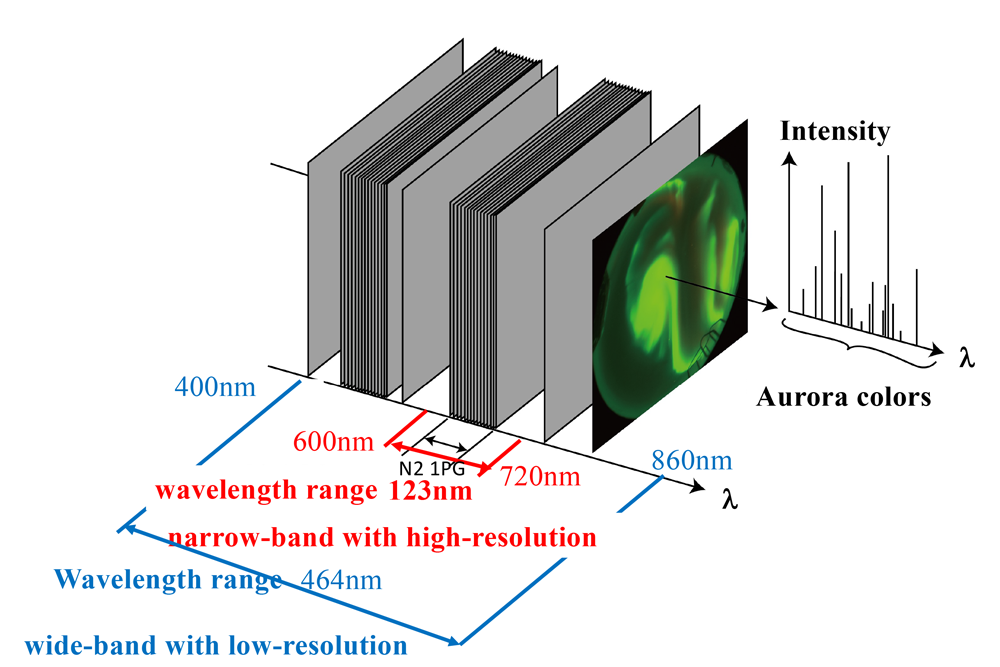METHODS
Two systems with different wavelength resolutions and bandwidths are installed at the same location for simultaneous imaging of the aurora. Color definition of the electron aurora is performed by a spectral imaging system with low-wavelength resolution and wide bandwidth. The color definition of the proton aurora is performed by a spectral imaging system with high-wavelength resolution and narrow bandwidth.
Narrow-band spectra are observed using a two-dimensional spectrometer with high-wavelength resolution, which is a grating-type spectrometer with two types of gratings: 500 gratings/mm2 and 1500 gratings/mm2. The wavelength resolution of the two-dimensional spectrometer is much higher than that of conventional interference filters. The wavelength resolution is much higher than that of conventional interference filters. Furthermore, the grating can be mechanically rotated to shift the simultaneous measurement wavelength range, enabling observation from 380-780 nm (Figure).

For example, there are currently five proposed emission mechanisms for type-B auroras. To validate all of them, it is necessary to measure the emission lines and bands of N2+1NG (427.8 nm), O(1S) (557.7 nm), O2+1PG (590-600 nm), and N21PG (620-690 nm, 1 nm resolution) almost simultaneously.
This instrument can simultaneously fractionate the N21PG band, allowing us to validate all the candidates for the type-B auroral emission mechanism. This is difficult to achieve using conventional interferometric bandpass filters. The 2D spectrometer is an instrument that scans a light beam perpendicular to a slit with a galvano mirror to obtain a two-dimensional image of the spectrum. The system provides two-dimensional wavelength spectrum images (two spatial dimensions + one wavelength dimension) in parallel and perpendicular to the slit in a single scan. This narrow-band spectral measurement system has a simultaneous observation wavelength range of 123 nm and a wavelength resolution of 0.312 nm. The broadband spectral measurement system has a simultaneous wavelength width of 464 nm and a pixel-wavelength resolution of 0.92 nm.
The weakness of this system is that it is not suitable for fast-changing auroras, since accurate spectral images cannot be obtained if the aurora changes during scanning. To compensate for this weakness, another system uses a liquid crystal tunable bandpass filter to measure broadband spectral images. The LCD tunable bandpass filter has a wavelength resolution of 6-14 nm and does not provide detailed emission line information, but it can measure two-dimensional images from 420 nm to 730 nm. Tracking of the aurora is possible, overcoming the above weakness.
